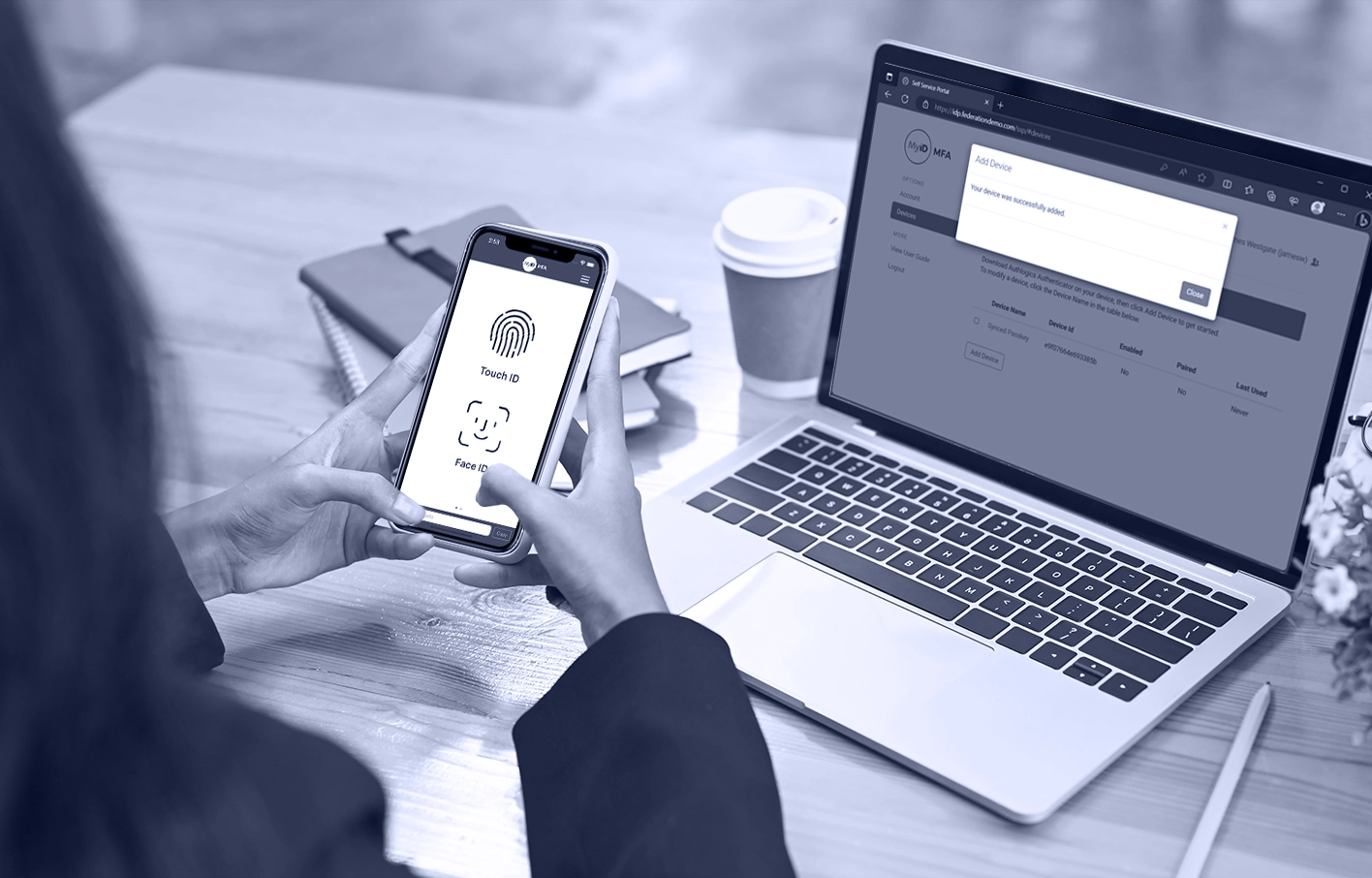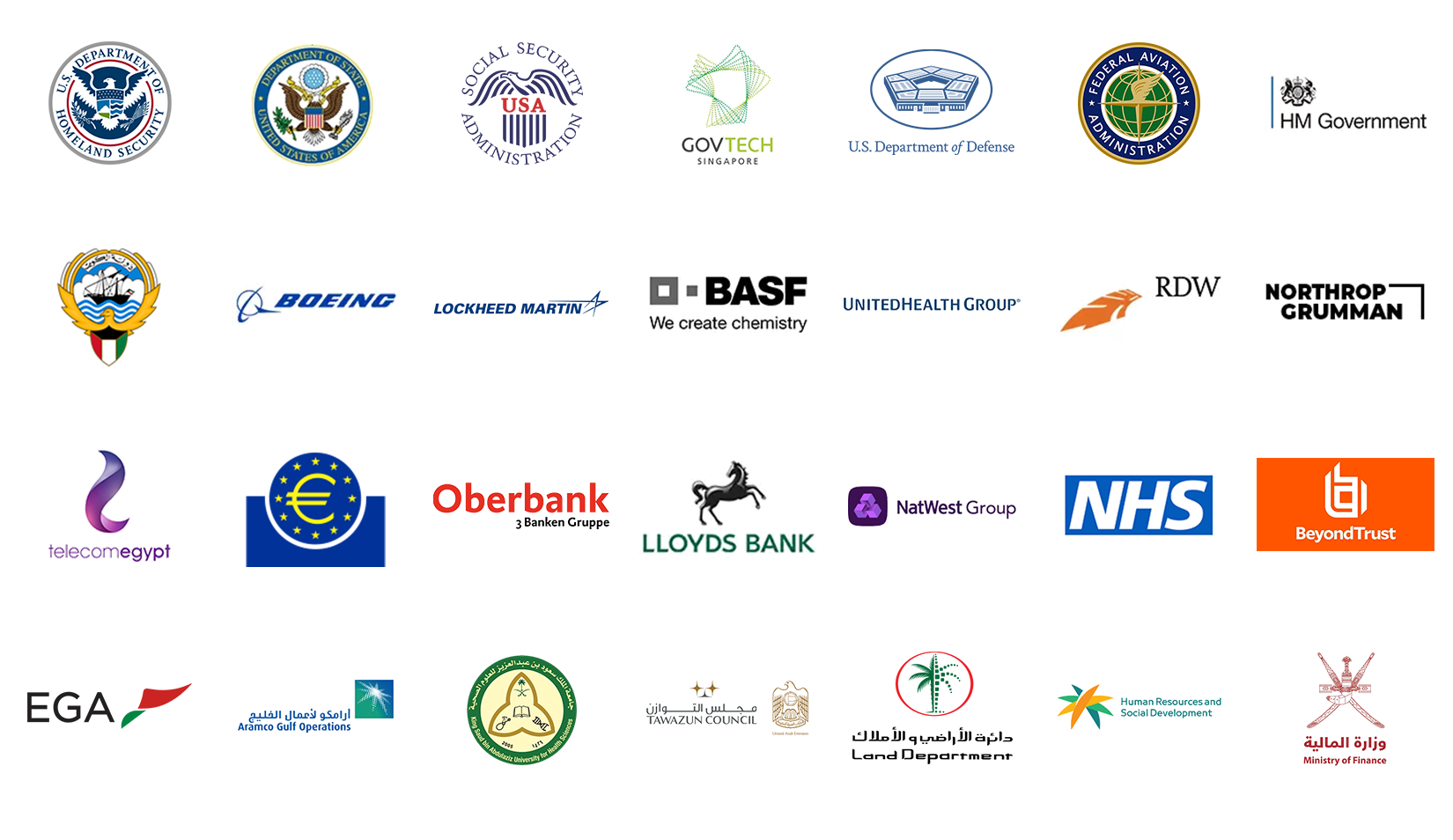
Enhance your Security with Multi-Factor Authentication
Protecting sensitive information has become more crucial than ever. With cyber threats and data breaches reported on a virtually daily basis, it is essential to fortify your online accounts and systems with robust security measures. One of the most effective methods to achieve this is through Multi-Factor Authentication (MFA).
Table of Contents
- What is Multi-Factor Authentication
- Why do you need MFA
- Authentication methods
- Two Factor Authentication
- User Experience
- Examination of the user experience
- Strategies for improving the user experience
- MyID MFA solution can help
What is Multi-Factor Authentication
Multi-Factor Authentication is a security protocol that goes beyond traditional username and password systems. It adds an additional layer of protection by requiring users to provide multiple forms of verification before accessing their accounts. This commonly includes something the user knows (like a password or PIN), something they have (such as a physical token or mobile device), or even something unique to them (like a fingerprint or facial recognition).
The importance of Multi-Factor Authentication cannot be overstated when it comes to enhancing security measures. By requiring multiple factors for authentication, it significantly reduces the risk of unauthorized access to your personal or confidential data. Even if one factor is compromised, an additional layer of verification ensures that only authorized users have access. This extra level of security acts as a strong deterrent to potential attackers, making it much more challenging for them to breach your accounts or systems.
Why do you need MFA
MFA is an effective defense against password theft, a prevalent threat that can lead to data breaches and financial losses. Even if an attacker acquires a user’s password, they will be unable to access the account without the additional verification factors. This multi-pronged approach makes it far more challenging for cybercriminals to breach security barriers.
MFA offers a variety of authentication methods, catering to diverse user preferences and device compatibility. Common options include one-time passcodes sent via SMS or email, mobile app authenticators, and hardware security keys, like YubiKeys. These methods provide a user-friendly and secure way to verify identity, ensuring that only authorized individuals can access sensitive information.
In conclusion, multi-factor authentication stands as an indispensable tool for safeguarding online accounts. Its ability to thwart password theft, provide user-friendly verification methods, and protect sensitive data makes it a critical component of any cybersecurity strategy. Whether you’re an individual protecting your personal accounts or an organization securing your company’s data, MFA is an investment worth making for a more secure and resilient digital presence.
Authentication Methods
Multi-Factor Authentication utilizes various authentication methods to enhance security and protect sensitive data. The following are some commonly used methods:
- Passwords: The most basic form of authentication, passwords are a combination of characters chosen by the user to gain access to a system or application.
- Security tokens: Require software to be downloaded and generate one-time passwords that users must enter to authenticate themselves.
- Biometrics: Biometric authentication methods, such as fingerprint scanning and face recognition, use unique physical attributes to verify a user’s identity.
- SMS codes: One-time codes sent via SMS to the user’s registered mobile phone, providing an additional layer of authentication.
- Smart cards: These cards contain embedded chips that store and process data, allowing users to authenticate by inserting the card into a reader.
- Hardware tokens: Similar to security tokens, hardware tokens are physical devices, like YubiKeys, that generate one-time passwords for user authentication.
Each authentication method has its own strengths and weaknesses. A thorough comparison of these methods is necessary to determine their effectiveness in the authentication method you wish to deploy.
Two-Factor Authentication (2FA)
In the realm of cybersecurity, two-factor authentication (2FA) and multi-factor authentication (MFA) are often used interchangeably, but there’s a subtle yet significant distinction between the two. Both methods aim to enhance security by adding an extra layer of verification beyond the traditional username and password combination.
2FA specifically requires two distinct authentication factors, typically something the user knows (like a password) and something the user has (like a physical security key or a one-time passcode generated by an app). MFA, on the other hand, encompasses a broader range of authentication methods, allowing for the utilization of two or more factors from the three main categories: knowledge, possession, and inherence.
Knowledge factors involve something the user knows, such as a password, PIN, or a secret answer to a security question. Possession factors rely on something the user has, such as a physical security token, a mobile device, or an email address. Inherence factors are based on something the user is, such as their fingerprint, facial features, or voice.
MFA offers greater flexibility and adaptability, enabling organizations to tailor authentication requirements to specific levels of risk and user profiles. For instance, a high-risk financial transaction might require a combination of knowledge, possession, and inherence factors, while a low-risk internal login might only need two factors from the same category.
Therefore 2FA is a subset of MFA, with the latter offering a more comprehensive and customizable approach to user authentication. Both methods significantly enhance security by making it more difficult for unauthorized individuals to access sensitive information and accounts.
User Experience
Implementing multi-factor authentication can significantly enhance the security of your online accounts and protect your sensitive information from unauthorized access. However, the user experience plays a vital role in the successful adoption of this authentication method. In this section, we will examine the user experience when implementing multi-factor authentication, analyze the ease of use, potential friction, and challenges, and explore strategies for improving the user experience during the authentication process.
Examination of the User Experience
When it comes to multi-factor authentication, the user experience should be seamless, intuitive, and efficient. Users should not find the authentication process difficult or time-consuming. Instead, it should complement their workflow and provide an added layer of security without hindering their productivity.
During the implementation of multi-factor authentication, it is essential to identify and address any potential friction points. For example, if the user is required to go through several steps or use complex verification methods, it may discourage them from enabling multi-factor authentication altogether. Therefore, streamlining the process and minimizing unnecessary hurdles is crucial to ensure user adoption.
Additionally, challenges in user adoption can arise due to lack of awareness or education about the importance and benefits of multi-factor authentication. Some users may perceive it as an inconvenience or may not fully understand how it protects their accounts. To overcome these challenges, organizations should prioritize user education and communicate the advantages of multi-factor authentication clearly.
Strategies for Improving User Experience
To enhance the user experience during multi-factor authentication, consider the following strategies:
- Simplify the process: Minimize the number of steps or verifications required. Utilize technology that allows for seamless and quick authentication.
- Offer a variety of methods: Provide users with multiple authentication options, such as SMS codes, biometrics, or hardware tokens, allowing them to choose the most convenient method for their preferences and devices.
- Provide clear instructions: Make sure users understand how to enable and use multi-factor authentication. Offer simple, step-by-step instructions and provide support channels for any questions or issues that may arise.
- Balance security and usability: Find the right balance between robust security measures and a user-friendly experience. Strive for strong authentication without overwhelming users with complex procedures.
By implementing these strategies, organizations can significantly improve the user experience during multi-factor authentication, leading to increased user adoption and enhanced security for their online accounts.
MyID MFA Solution can help
Intercede’s MyID MFA solution can help organizations meet their MFA needs by providing a comprehensive and flexible solution that is easy to use and manage. MyID supports a variety of authentication methods, including one-time passcodes, hardware tokens, and biometrics, and can be integrated with a variety of existing identity and access management (IAM) systems. MyID also includes a self-service portal that allows users to manage their own devices and reset their passwords.
Here are some of the key benefits of Intercede’s MyID MFA solution:
- Comprehensive and flexible: MyID supports a variety of authentication methods and can be integrated with a variety of existing IAM systems.
- Easy to use and manage: MyID has a user-friendly interface and can be easily deployed and managed.
- Secure: MyID uses strong encryption and other security measures to protect user data.
- Scalable: MyID can be scaled to meet the needs of organizations of all sizes.
If you are looking for a comprehensive, flexible, and easy-to-use MFA solution, then Intercede’s MyID MFA solution is a great option.
Trusted by Governments and Enterprises Worldwide
Where protecting systems and information really matters, you
will find Intercede. Whether its citizen
data, aerospace and defence systems, high-value financial transactions,
intellectual property or air traffic control, we are proud that many leading
organisations around the world choose Intercede solutions to protect themselves
against data breach, comply with regulations and ensure business continuity.

